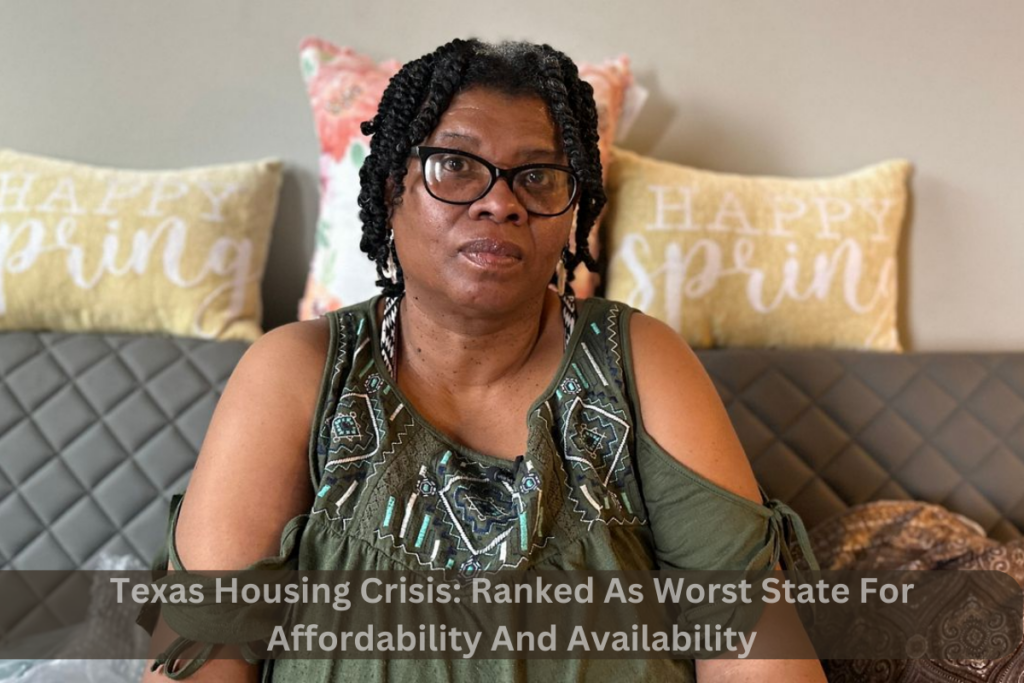In the most recent annual National Low Income Housing Coalition study, Texas remains at the top of the list as the state with the fewest affordable housing options. “The Gap” survey rates Texas as the sixth-worst state in the U.S. for affordable housing.
The urban areas of Austin, Dallas, and Houston are ranked third, fourth, and fifth among the worst in the US. This year’s data shows the national average for affordable and available rental dwellings is 33 rental units per every 100 severely low-income households.
There are 25 rental homes in Texas. Houston came in at 19. Both Austin and Dallas have only 16 rental units that are both inexpensive and available.
Kecia Prince is in the process of getting settled into her brand-new apartment in North Austin, which has two bedrooms. If she did not receive her disability check and Section 8 housing voucher, she could not afford this home. Even with support, Prince’s annual salary is $16,500 annually for the single mother and her son.
“I’m coming off of a divorce and I lost my job, my place and all that stuff and I was living on someone’s couch,” she said.
Prince is the person that put all of these numbers together. She makes up the 22% of Texas who are “extremely low-income renters.”
Because of past and ongoing racism in the system, a disproportionate percentage of these tenants are Black, Latino, Native, and Alaskan Native. This is because historical and ongoing racism in the system hinders BIPOC from owning homes and accumulating generational wealth.
A majority are in the labor force, seniors, or have a disability, like Prince.
Why does Texas continue to fall short when it comes to providing housing for those most in need of it? Michael Depland, a representative for the advocacy group Texas Housers, stated that the issue is complex on many different levels. “So, how much time do you have?” he said. The non-profit policy group primarily protects tenants’ rights to equitable housing.
According to Depland, acute shortages of affordable rental units, a lack of state-funded programs and subsidized housing, exclusionary zoning rules, population increase, and inflation are some of the primary issues. This is precisely what the report indicates.
Also, consider this news:
- Texas Senate Approves $16.5 Billion Property Tax Relief Package
- Texas University President Draws Criticism For Canceling Student Drag Show
- New Pumping Station Signals Dallas Commitment To Flood Prevention
He stated that there are many opportunities to improve conditions and increase the availability of affordable homes. “All we need is the political will to get it done,” the speaker said.
According to Depland, Spectrum News Researchers from Texas Housers discovered that none of the state’s more than $30 billion surplus was allocated to the renter or tenant rights programs. This is according to their findings.
The solution:
Both the Gap Report and Texas Housers agree that the state and local governments need to invest in the construction, maintenance, and finance of low-income housing as well as financial aid for renters.
The documentary “The Gap” concludes at the end of its story: “Only continuous and major federal expenditures in rental housing will assure that the lowest-income renters, who are disproportionately persons of color, have affordable houses.”
Even though Prince is one of the fortunate, highly low-income renters in Texas who has access to cheap housing, she is just about unable to make ends meet on her current income.
“As tenants, we don’t have a lot of rights, and everything is aimed toward the landlords,” she added. “Everything is directed toward the landlords.”
Still, Prince gives what little extra money she has to people who are even less well off than she is to “pay it forward.”
If you liked reading this article, follow us on our website, kerrvillebreakingnews.com, for more updates.

